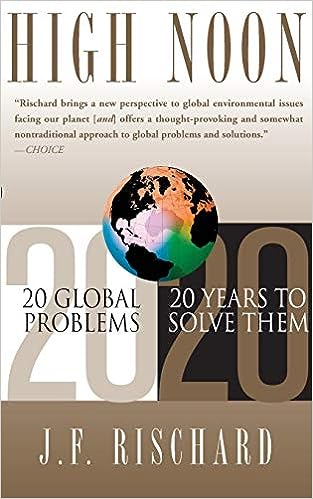(For starters, I hope that all of you who read the previous LOTRW post on hazards will revisit that post and read John Plodinec’s thoughtful comments).
Here are just a few examples of articles published this past week that shed additional light on what’s involved in extending the NTSB-approach from commercial aviation to natural disasters.
Two come from the New York Times. The first is entitled Years of Graft Doomed 2 Dams in Libya, Leaving Thousands in Muddy Graves. The article merits a careful read from start to finish. An excerpt:
For years, the two aging dams loomed in the mountains above the Libyan city of Derna, riddled with cracks and fissures, threatening the thousands of people living in the valley below.
A Turkish company, Arsel Construction, was eventually hired by the Libyan government to upgrade the dams and build a new one. The work, Arsel said on its website at the time, was completed in 2012.
By then, the government had paid millions of dollars to the Turkish contractor for preliminary work, according to a government assessment dated 2011. But Arsel left Libya in the turmoil of the 2011 popular revolt against Col. Muammar el-Qaddafi, the country’s longtime dictator. Neither dam was ever repaired, the assessment said, and no third dam ever materialized.
When a lethal storm rolled up the Mediterranean Sea toward Derna two weeks ago, dumping far more rain than usual on the Green Mountains above the city, the dams burst. An avalanche of water boomed down into the valley below, driving much of Derna out to sea and killing at least 4,000 people. More than 8,000 others are still missing.
Why the dams went unfixed despite repeated warnings is key to understanding the muddy disaster that wrecked a storied city and traumatized a country. It also goes to the heart of the dysfunction and corruption that have consumed Libya ever since rebels overthrew Colonel el-Qaddafi.
This tale is not unique to Libya. Shoddy construction has also been blamed for much of the 43,000 lives lost in the recent Turkish earthquake. Nor is the problem confined to dams or to Africa and the Middle East; no nation is immune. Here at home recall the role of electrical power lines in triggering the 2018 Camp Fire resulting in the destruction of Paradise CA. Some have suggested a similar contributor to the more recent Lahaina fire. Recall that shoddy construction is in some sense a root problem, but it is also a symptom – of the high cost of building-in and maintaining resilience, and the long time scales that may be involved before a recurrence of a rare hazard allows a society to reap the return on its investment. As a result, shoddy construction isn’t always a matter of simple greed, but the result of a complex interplay of financial systems, equity, education, and more.
The second NYT article is a guest essay by Sarah Stodola entitled If Hurricane Rebuilding Is Only Affordable for the Wealthy, This Is the Florida You Get. She says this: When Hurricane Ian, the costliest storm in Florida’s history, made landfall nearly a year ago, a storm surge as high as 15 feet left the town of Fort Myers Beach nearly submerged for several hours.
Today, a drive across the island reveals countless properties recently cleared of debris selling for millions and even tens of millions of dollars. The rapid redevelopment of coastal communities like Fort Myers Beach in the face of sea level rise and more intense storms and hurricanes mirrors a phenomenon sweeping beachfronts around the world: upscaling, the practice of replacing old or more modest homes, condos and hotels with more expensive versions, largely thanks to the high cost of building up to new storm resistant codes, and the potentially uninsured risks associated with doing so.
Despite their intent to make coastal communities safer and more resilient, Florida’s building codes can actually complicate resilience efforts in the long term. Buildings constructed with concrete and other stiff materials represent a doubling down on Gulf Coast living as climate change makes Atlantic hurricanes more powerful, and more likely to hit that very coast. And taxpayers, along with the federal, state and local governments, must foot the bill to maintain structures on eroding beaches and flood-prone coasts.
And yet we could be making other plans for these communities. There are policies that would encourage people to move away from the coast, as well as new possibilities for movable and flexible structures.
Ms. Sodola surfaces issues and trends prevalent along the entirety of the US hurricane-prone coast. Engineering fixes are so expensive as to favor massive complexes that provide high economic returns. (It would be as if improving commercial aviation safety could be accomplished only by constructing bigger planes.)
A third article comes from USA Today, entitled Deadly disasters are ravaging school communities in growing numbers. Is there hope ahead? This excerpt frames the problem:
An increase of natural disasters from wildfires to floods to hurricanes to tornadoes – exacerbated by climate change – have ravaged America’s schools since students returned to in-person learning after the COVID-19 pandemic. And manmade disasters from lead in drinking water to asbestos in school buildings are playing a role.
This school year alone, devastating wildfires exacerbated by winds from Hurricane Dora ravaged one school and damaged three others in Maui. And winds from category three Hurricane Idalia destroyed the roof of an elementary school in Hoboken, Georgia. Kids attending schools without air conditioning were sent home at the beginning of the school year in Puerto Rico, Philadelphia and in other areas of the mid-Atlantic and Northeast because of extreme heat.
Last school year, torrential rains and damaging winds from Hurricane Fiona ravaged schools in Puerto Rico, schools closed in pockets of California after a bomb cyclone and Pacific storms caused flooding. A tornado in Whiteland, Indiana, dismantled internet connection for families across the region. Lead in drinking water Jackson schools closed campuses in the past few years more times than one teacher could recall in an interview with USA TODAY.
And old buildings that were found to be lined with asbestos led to closures of at least six campuses across Philadelphia – sending thousands of kids to cram into other occupied schools.
The focus is on schools, but study of disasters quickly reveals that building community-level resilience to hazards, unlike the aircraft case, is much more than a matter of changing a single component’s defective design or manufacture, or training pilots or air traffic controllers to deal with a novel scenario. The problems facing schools are mirrored in the vulnerabilities of hospitals, or electrical or financial infrastructure, or maintaining continuity of food and water delivery, etc. As a rule, disasters reveal vulnerabilities in each of these that the recovering communities must address simultaneously.
The human cost of failing to get this right is staggering. Consider this article from the Washington Post: What one motel tells us about survival in post-disaster America. To spend even the few minutes required to read this article is to experience anguish, sadness, survivor’s guilt – every known negative emotion. Actually living a full year, one minute at a time, under these circumstances has to be soul-crushing, even to the bravest and staunchest. Multiply by the number of El Rancho Motel residents; multiply that by the number of motels similarly filled with Ian survivors alone. Consider that this past year might not even be the halfway point for many if not most of them. Reflect that Lahaina survivors are even now only experiencing the earliest stages of this nightmare. Recognize that a full catalog of people who’ve never recovered normal lives following other US disasters of the past two decades would number in the thousands. Realize that virtually all these survivors are living in close daily contact with and in obvious contrast to others who were largely unaffected by the respective disasters – people who are complacent/oblivious to the survivors’ diminished circumstances and prospects. Recall further that most of the people who find themselves in these dire straits did not choose to live this way; they were constrained in their options by poverty, and their pre-existing poverty has been exacerbated by the hazard. It’s heartbreaking. And, at scale, it’s socially destabilizing.
The reality is that hundreds of millions of people live in hazardous areas – floodplain, seismically active areas, etc., where future risk is hardwired in – disaster is only a matter of time. Disaster prevention options available in the commercial aviation analog (e.g., simply grounding unsafe aircraft until modifications are made) are not available. Governments can’t demand, for example, that all residing in hazardous areas evacuate forthwith. Instead, we humans have to be more cautious and strategic about where we settle in the first place. This morning’s NYT story, Flood Threats Are Rising. Here’s Where People Are Moving Into Harm’s Way, makes clear that quite the opposite is happening worldwide. As difficult as it is, governments and peoples should implement policies (blending incentives and proscriptive regulations governing land use, building codes, and infrastructure performance) This is the last point at which it is inexpensive and possible to build resilience to hazards and forestall future tragedy.
No place on a planet doing much of its business through extreme events can be entirely safe. But we can and should do better in where and how we choose to live and work.



